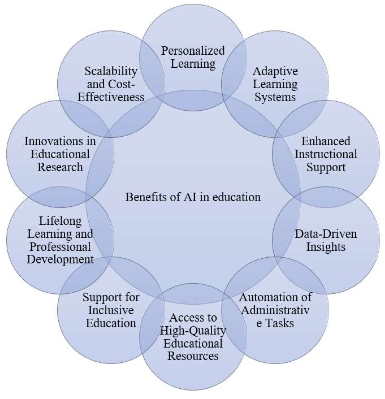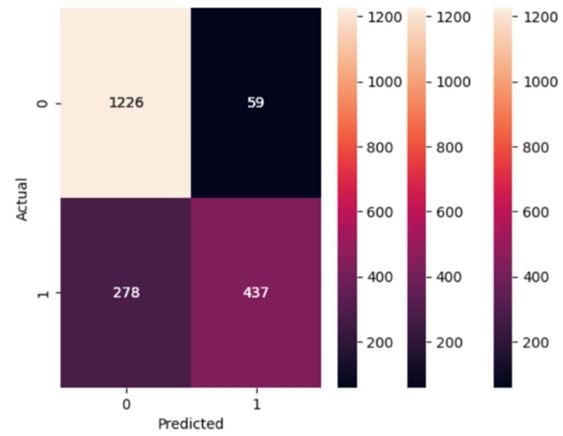Integrating real-world problems into chemistry curricula: Enhancing relevance and student engagement
Abstract
Chemistry education plays a pivotal role in fostering scientific literacy and addressing global challenges. However, traditional curricula often fail to connect abstract concepts to real-world applications, leading to disengagement among students. This study examines how integrating real-world problems into chemistry education enhances student engagement and prepares them to address pressing global challenges. Grounded in constructivist, contextual, and situated learning theories, the paper presents actionable teaching strategies, including problem-based learning and case studies. These strategies contextualize abstract chemical principles within pressing global issues such as climate change, sustainable energy, and public health. The paper also addresses practical challenges in implementation, including resource limitations, curricular rigidity, and assessment complexities, and offers mitigation strategies such as leveraging digital tools and fostering industry partnerships. Empirical evidence highlights the effectiveness of these methods in improving conceptual understanding, critical thinking, and interdisciplinary collaboration. By aligning chemistry education with contemporary scientific practices and global needs, this study advocates for a transformative shift in pedagogy, ensuring students develop critical thinking, interdisciplinary skills, and the capacity to navigate complex global challenges.
References
[1]Pascual L. Tot és química. Reptes per a un futur sostenible. Metode Science Studies Journal. 2024; (15). doi: 10.7203/metode.15.29175
[2]Ryan D, Sweeder D, Crandell OM. Chemistry Education Research at a Crossroads: Where Do We Need to Go Now?. Journal of Chemical Education. 2023; 100(5): 1710-1715. doi: 10.1021/acs.jchemed.3c00091
[3]Taber KS. Progressing chemistry education research as a disciplinary field. Disciplinary and Interdisciplinary Science Education Research. 2019; 1(1). doi: 10.1186/s43031-019-0011-z
[4]Mahaffy PG, Ho FM, Haack JA, et al. Can Chemistry Be a Central Science without Systems Thinking?. Journal of Chemical Education. 2019; 96(12): 2679-2681. doi: 10.1021/acs.jchemed.9b00991
[5]Sristy SMIH, Muteti CZ, Vasquez Y, et al. Integrating Real-World Contexts and Application Cards Activities in the General Chemistry I Course Increases Students’ Achievement Scores and Perceptions of Chemistry Relevance. Journal of Chemical Education. 2023; 100(12): 4608-4618. doi: 10.1021/acs.jchemed.3c00516
[6]Morra B. The Chemistry Connections Challenge: Encouraging Students To Connect Course Concepts with Real-World Applications. Journal of Chemical Education. 2018; 95(12): 2212-2215. doi: 10.1021/acs.jchemed.8b00137
[7]Prunici E. Disciplinary Intervention Model In Ensuring The Quality Of Chemistry Learning Regarding The Training Of Specific Competences. Values, systems, education Challenges and Perspectives; 2023.
[8]Uskoković V. Major Challenges for the Modern Chemistry in Particular and Science in General. Foundations of Science. 2010; 15(4): 303-344. doi: 10.1007/s10699-010-9185-8
[9]Kimberlin S, Yezierski E. Effectiveness of Inquiry-Based Lessons Using Particulate Level Models To Develop High School Students’ Understanding of Conceptual Stoichiometry. Journal of Chemical Education. 2016; 93(6): 1002-1009. doi: 10.1021/acs.jchemed.5b01010
[10]Sokrat H, Tamani S, Moutaabbid M, et al. Difficulties of Students from the Faculty of Science with Regard to Understanding the Concepts of Chemical Thermodynamics. Procedia - Social and Behavioral Sciences. 2014; 116: 368-372. doi: 10.1016/j.sbspro.2014.01.223
[11]Vallespin MRD, Aliman A, Sedurifa EN, et al. Experienced difficulties of BSE-Chemistry students in physical chemistry and suggested enhancement. Journal of Physics: Conference Series. 2019; 1340(1): 012062. doi: 10.1088/1742-6596/1340/1/012062
[12]Pilcher LA. Embedding systems thinking in tertiary chemistry for sustainability. Physical Sciences Reviews. 2022; 9(1): 309-325. doi: 10.1515/psr-2022-0119
[13]Mahaffy PG, Elgersma AK. Systems thinking, the molecular basis of sustainability and the planetary boundaries framework: Complementary core competencies for chemistry education. Current Opinion in Green and Sustainable Chemistry. 2022; 37: 100663. doi: 10.1016/j.cogsc.2022.100663
[14]Pinto G, Prolongo ML. Stoichiometry in Context: Inquiry-Guided Problems of Chemistry for Encouraging Critical Thinking in Engineering Students. International Journal of Engineering Pedagogy (iJEP). 2013; 3(1): 24. doi: 10.3991/ijep.v3i1.2313
[15]Ganarajan S, Ashok K. Sprouting “sustainability” in chemical sciences curriculum. Environment, Development and Sustainability. 2020; 23(7): 11012-11024. doi: 10.1007/s10668-020-01102-4
[16]Pratomo H, Fitriyana N, Wiyarsi A, et al. Mapping chemistry learning difficulties of secondary school students: a cross-grade study. Journal of Education and Learning (EduLearn). 2025; 19(2): 909-920. doi: 10.11591/edulearn.v19i2.21826
[17]Steidtmann L, Kleickmann T, Steffensky M. Declining interest in science in lower secondary school classes: Quasi‐experimental and longitudinal evidence on the role of teaching and teaching quality. Journal of Research in Science Teaching. 2022; 60(1): 164-195. doi: 10.1002/tea.21794
[18]Perets EA, Chabeda D, Gong AZ, et al. Impact of the Emergency Transition to Remote Teaching on Student Engagement in a Non-STEM Undergraduate Chemistry Course in the Time of COVID-19. Journal of Chemical Education. 2020; 97(9): 2439-2447. doi: 10.1021/acs.jchemed.0c00879
[19]Ugwo J, Yusuf BO, Oyedoyin OS. Investigating Factors Responsible For Low Chemistry Enrollment: A Case Study University Of Ibadan-Okene Study Centre. Catalyx: Journal of Process Chemistry and Technology. 2024; 1(1): 45-62. doi: 10.61978/catalyx.v1i1.243
[20]Naeem S, Ali DrZ, Ahmed DrN. Evaluation of the Causes of Interest Decline in the Subject of Chemistry amongst Secondary and Higher Secondary School Students in Karachi Pakistan. International Journal of Social Science & Entrepreneurship. 2022; 2(2): 175-184. doi: 10.58661/ijsse.v2i2.48
[21]OECD. PISA 2018 Science Framework. In: PISA 2018 Assessment and Analytical Framework. OECD Publishing; 2019.
[22]Parsons J, Schlosser S. Student Perceptions and Successes in Various Levels of Undergraduate Chemistry Education. The FASEB Journal. 2020; 34(S1): 1-1. doi: 10.1096/fasebj.2020.34.s1.04944
[23]Elliott V. An Analysis of the Disconnection Between Urban Schools and Science Education. Social Science Learning Education Journal. 2017; 2(9). doi: 10.15520/sslej.v2i9.37
[24]Raker JR, Dood AJ, Srinivasan S, et al. Pedagogies of engagement use in postsecondary chemistry education in the United States: results from a national survey. Chemistry Education Research and Practice. 2021; 22(1): 30-42. doi: 10.1039/d0rp00125b
[25]Zhao Y, Wang L. A case study of student development across project-based learning units in middle school chemistry. Disciplinary and Interdisciplinary Science Education Research. 2022; 4(1). doi: 10.1186/s43031-021-00045-8
[26]George A, Zowada C, Eilks I, et al. Exploring Chemistry Professors’ Methods of Highlighting the Relevancy of Chemistry: Opportunities, Obstacles, and Suggestions to Improve Students’ Motivation in Science Classrooms. Education Sciences. 2021; 11(1): 13. doi: 10.3390/educsci11010013
[27]Reyes RL, Villanueva JA. Narrative-Based Concept Representations: Fostering Visual Cognition in the Introductory Chemistry Classroom. Journal of Chemical Education. 2024; 101(3): 1106-1119. doi: 10.1021/acs.jchemed.3c01151
[28]Reyes R. Chemistry Takes Center Stage: Stories and Narratives as Tools for Instruction. Philippine Journal of Science. 2022; 152(1). doi: 10.56899/152.01.13
[29]Reyes RL. Exploring Science Literature: Integrating Chemistry Research with Chemical Education. Journal of Chemical Education. 2023; 100(6): 2303-2311. doi: 10.1021/acs.jchemed.3c00101
[30]Reyes RL, Regala JD. Integrating Atmospheric Science Research in Chemical Education: Utility of Primary Research Articles in Fostering Student Interest in Meteorology. Philippine Journal of Science. 2023; 152(S1). doi: 10.56899/152.s1.12
[31]Reyes RL. Article Citation Tracking Exercise: An Activity in Assessing Research Impact and the Interdisciplinary Nature of Chemistry. Journal of Chemical Education. 2023; 100(11): 4369-4377. doi: 10.1021/acs.jchemed.3c00717
[32]Ichinose T. The Possibility of Problem-Based Learning Targeted Toward SDGs to Undertake Transformative Actions for Sustainability. The Routledge International Handbook of Life and Values Education in Asia; 2024.
[33]Rehmat AP, Glazewski K, Hmelo-Silver CE. Contextualizing Problem-Based Learning. The Oxford Handbook of Educational Psychology; 2022.
[34]Marzuki OF, Lih ETY, Abdullah WNZ, et al. Innovating Education: A Comprehensive Review of STEM Education Approaches. International Journal of Academic Research in Progressive Education and Development. 2024; 13(1). doi: 10.6007/ijarped/v13-i1/20490
[35]Popov N, Wolhuter C, de Beer L, et al. New Challenges to Education: Lessons from Around the World. BCES, Sofia, Bulgaria; 2021.
[36]Cooper MM, Stowe RL. Chemistry Education Research—From Personal Empiricism to Evidence, Theory, and Informed Practice. Chemical Reviews. 2018; 118(12): 6053-6087. doi: 10.1021/acs.chemrev.8b00020
[37]King D. New perspectives on context-based chemistry education: using a dialectical sociocultural approach to view teaching and learning. Studies in Science Education. 2012; 48(1): 51-87. doi: 10.1080/03057267.2012.655037
[38]Piaget J. The Origins of Intelligence in Children. W W Norton & Co; 1952.
[39]Vygotsky LS. Mind in society: The development of higher psychological processes. Harvard University Press; 1978.
[40]Barrows HS. Problem‐based learning in medicine and beyond: A brief overview. New Directions for Teaching and Learning. 1996; 1996(68): 3-12. doi: 10.1002/tl.37219966804
[41]Chen R. Exploring the Effectiveness of Problem-Based Learning as a Constructivist Approach in Enhancing Critical Thinking Skills in High School Classes. Research and Advances in Education. 2024; 3(4): 26-32. doi: 10.56397/rae.2024.04.05
[42]Thomas JW. A review of research on project-based learning. The Autodesk Foundation; 2000.
[43]Albanese MA, Mitchell S. Problem-based learning. Academic Medicine. 1993; 68(1): 52-81. doi: 10.1097/00001888-199301000-00012
[44]Hmelo-Silver CE. Problem-based learning: what and how do students learn?. Educational Psychology Review. 2004, 16(3): 235-266. https://doi.org/10.1023/B:EDPR.0000034022.16470.f3
[45]Carvalho A. The impact of PBL on transferable skills development in management education. Innovations in Education and Teaching International. 2015; 53(1): 35-47. doi: 10.1080/14703297.2015.1020327
[46]Smith K, Maynard N, Berry A, et al. Principles of Problem-Based Learning (PBL) in STEM Education: Using Expert Wisdom and Research to Frame Educational Practice. Education Sciences. 2022; 12(10): 728. doi: 10.3390/educsci12100728
[47]Jumhur AA, Avianti RA, Nurfitri PE, et al. Implementation of Problem-based Learning to Improve Critical Thinking Ability of Vocational Students in Jakarta. European Journal of Education and Pedagogy. 2024; 5(5): 16-24. doi: 10.24018/ejedu.2024.5.5.860
[48]Ambrose VK, Davis CA, Ziegler MF. From Research to Practice: A Framework for Contextualizing Teaching and Learning. Journal of College Reading and Learning. 2013; 44(1): 35-50. doi: 10.1080/10790195.2013.10850371
[49]Davidsson E, Enochson PG. Teachers’ way of contextualising the science content in lesson introductions. Science Education International. 2021; 32(1): 46-54. doi: 10.33828/sei.v32.i1.5
[50]Kolb DA. Experiential Learning: Experience as the Source of Learning and Development, 2nd ed. Pearson FT Press; 2014.
[51]Anderson LW, Krathwohl DR. A Taxonomy for Learning, Teaching and Assessing: A Revision of Bloom’s Taxonomy of Educational Objectives: Complete Edition. Longman; 2001.
[52]Schunk DH, Pintrich PR, Meece JL. Motivation and learning. Educational Psychology: A Contemporary Approach, 3rd edition. Pearson; 2008.
[53]Larson LC, Miller TN. 21st Century Skills: Prepare Students for the Future. Kappa Delta Pi Record. 2011; 47(3): 121-123. doi: 10.1080/00228958.2011.10516575
[54]Lave J, Wenger E. Situated Learning: Legitimate Peripheral Participation. Cambridge University Press; 1991.
[55]Herrington J, Oliver R. An instructional design framework for authentic learning environments. Educational Technology Research and Development. 2000; 48(3): 23-48. doi: 10.1007/bf02319856
[56]Yadav A, Subedi D, Lundeberg MA, et al. Problem‐based Learning: Influence on Students’ Learning in an Electrical Engineering Course. Journal of Engineering Education. 2011; 100(2): 253-280. doi: 10.1002/j.2168-9830.2011.tb00013.x
[57]Brown JS, Collins A, Duguid P. Situated Cognition and the Culture of Learning. Educational Researcher. 1989; 18(1): 32-42. doi: 10.3102/0013189x018001032
[58]Reyes RL, Regala JD, Co AE. A Shared Experience of Sciences and Mathematics Teaching during the Pandemic in the Philippines: Circumnavigating Challenges into Learning Opportunities and Communal Involvement. International Journal of Innovation in Science and Mathematics Education. 2024; 32(4). doi: 10.30722/ijisme.32.04.002
[59]da Silva Júnior CA, Girotto Júnior G, Morais C, et al. Green chemistry for all: three principles of Inclusive Green and Sustainable Chemistry Education. Pure and Applied Chemistry. 2024; 96(9): 1299-1311. doi: 10.1515/pac-2024-0245
[60]Ryan MP. Five Case Studies on Tackling Real-World Problems as a Means to Increase Student Engagement. Fostering Meaningful Learning Experiences Through Student Engagement; 2021.
[61]Ardiansyah AI, Putra AK, Nikitina N. Investigating Problem-Based Learning Model’s Impact on Student’s Critical Thinking Skills in Environmental Conservation Context. Jambura Geo Education Journal. 2024; 5(2): 87-103. doi: 10.37905/jgej.v5i2.26110
[62]Elder A. Using a Brief Form of Problem-Based Learning in a Research Methods Class: Perspectives of Instructor and Students. Journal of University Teaching and Learning Practice. 2015; 12(1). doi: 10.53761/1.12.1.8
[63]Norhaini Mansor A, Ooi Abdullah N, Abd Wahab J, et al. Managing Problem-based Learning: Challenges and Solutions for Educational Practice. Asian Social Science. 2015; 11(4). doi: 10.5539/ass.v11n4p259
[64]Montero CS, Leite LO. Towards Local Community Involvement in Students’ Science Learning: Perspectives of Students and Teachers. Journal of Teaching and Learning. 2022; 16(3): 21-43. doi: 10.22329/jtl.v16i3.6961
[65]Ho K, Svidinskiy BS, Smith SR, et al. The integration of a community service learning water project in a post-secondary chemistry lab. Chemistry Education Research and Practice. 2021; 22(3): 602-615. doi: 10.1039/d0rp00374c
[66]Sánchez-García E, Martínez-Falcó J, Marco-Lajara B, et al. Revolutionizing the circular economy through new technologies: A new era of sustainable progress. Environmental Technology & Innovation. 2024; 33: 103509. doi: 10.1016/j.eti.2023.103509
[67]Iles A, Mulvihill MJ. Collaboration Across Disciplines for Sustainability: Green Chemistry as an Emerging Multistakeholder Community. Environmental Science & Technology. 2012; 46(11): 5643-5649. doi: 10.1021/es300803t
[68]Swan JA, Spiro TG. Context in Chemistry: Integrating Environmental Chemistry with the Chemistry Curriculum. Journal of Chemical Education. 1995; 72(11): 967. doi: 10.1021/ed072p967
[69]Abdullah SISS, Halim L, Shahali EHM. Integration of environmental knowledge across biology, physics and chemistry subject at secondary school level in Malaysia. Procedia - Social and Behavioral Sciences. 2011; 15: 1024-1028. doi: 10.1016/j.sbspro.2011.03.233
[70]Aminpour M, Montemagno C, Tuszynski JA. An Overview of Molecular Modeling for Drug Discovery with Specific Illustrative Examples of Applications. Molecules. 2019; 24(9): 1693. doi: 10.3390/molecules24091693
[71]Biala G, Kedzierska E, Kruk-Slomka M, et al. Research in the Field of Drug Design and Development. Pharmaceuticals. 2023; 16(9): 1283. doi: 10.3390/ph16091283
[72]Oliveira JRP, Tusset AM, Andrade DI, et al. Action Plans Study: Principles of Green Chemistry, Sustainable Development, and Smart Cities. Sustainability. 2024; 16(18): 8041. doi: 10.3390/su16188041
[73]O’Neil NJ, Scott S, Relph R, et al. Approaches to Incorporating Green Chemistry and Safety into Laboratory Culture. Journal of Chemical Education. 2020; 98(1): 84-91. doi: 10.1021/acs.jchemed.0c00134
[74]Moshood TD, Nawanir G, Mahmud F, et al. Sustainability of biodegradable plastics: New problem or solution to solve the global plastic pollution?. Current Research in Green and Sustainable Chemistry. 2022; 5: 100273. doi: 10.1016/j.crgsc.2022.100273
[75]Liu P. Improving Student Motivation and Perception of Chemistry’s Relevance by Learning about Semiconductors in a General Chemistry Course for Engineering Students. Journal of Chemical Education. 2024; 101(2): 411-419. doi: 10.1021/acs.jchemed.3c00721
[76]Fitriyana N, Wiyarsi A, Pratomo H, et al. The importance of integrated STEM learning in chemistry lesson: Perspectives from high school and vocational school chemistry teachers. Journal of Technology and Science Education. 2024; 14(2): 418. doi: 10.3926/jotse.2356
[77]Harackiewicz JM, Smith JL, Priniski SJ. Interest Matters. Policy Insights from the Behavioral and Brain Sciences. 2016; 3(2): 220-227. doi: 10.1177/2372732216655542
[78]Roehrig GH, Dare EA, Ellis JA, et al. Beyond the basics: a detailed conceptual framework of integrated STEM. Disciplinary and Interdisciplinary Science Education Research. 2021; 3(1). doi: 10.1186/s43031-021-00041-y
[79]Rahmawati Y, Akbar MJ, Budi S, et al. Exploring value-based learning environment for sustainable development in education: Integration of socio-scientific issues in chemistry learning. In: Proceedings of the the 3rd International Conference On Science, Mathematics, Environment, And Education: Flexibility in Research and Innovation on Science, Mathematics, Environment, and education for sustainable development; 2023.
[80]Aidoo B, Boateng SK, Kissi PS, Ofori I. Effect of Problem-Based Learning on Students’ Achievement in Chemistry. Journal of Education and Practice. 2016.
[81]Omari S, Ouahi MB, et al. Boosting Student Motivation in Chemistry: A Study on the Integration of Educational Robotics and Mobile Technology for pH Instruction. Science Education International. 2024; 35(3): 261-269. doi: 10.33828/sei.v35.i3.9
[82]Saidanvar U, Sirojov F. Increasing Educational Activity In Chemistry Lessons. Distance Education in Ukraine: Innovative, Normative-Legal, Pedagogical Aspects. 2024; (4): 112-118. doi: 10.18372/2786-5495.1.18886
[83]Sulistina O, Samudra Mutiara Hasanah. Improving Chemical Literacy Skills: Integrated Socio-Scientific Issues Content in Augmented Reality Mobile. International Journal of Interactive Mobile Technologies (iJIM). 2024; 18(05): 135-147. doi: 10.3991/ijim.v18i05.47923
[84]Khatimah MH, Chisbiyah LA. Fostering Engagement and Learning Outcomes: A Comparative Analysis of Ethnochemical and STEM-based Pedagogies for Chemistry Learning in Vocational High Schools. Jurnal Pendidikan Sains. 2024; 12(1): 1-6. doi: 10.17977/jps.v12i12024p001
[85]Reyes RL, Isleta KP, Regala JD, et al. Enhancing experiential science learning with virtual labs: A narrative account of merits, challenges, and implementation strategies. Journal of Computer Assisted Learning. 2024; 40(6): 3167-3186. doi: 10.1111/jcal.13061
[86]Reyes RL, Isleta KP, Regala JD, Bialba DM. A Design-and-Develop Approach in the Construction of a Do-It-Yourself Microscope: Enhancing Accessibility in Science Education. Philippine Journal of Science. 2024.
[87]Yu L, Zin ZM. The critical thinking-oriented adaptations of problem-based learning models: a systematic review. Frontiers in Education. 2023; 8. doi: 10.3389/feduc.2023.1139987
[88]Bridges S, Yiu CKY, Botelho MG. Design Considerations for an Integrated, Problem-Based Curriculum. Medical Science Educator. 2016; 26(3): 365-373. doi: 10.1007/s40670-016-0255-6
[89]Roehrig GH, Dare EA, Ring-Whalen E, et al. Understanding coherence and integration in integrated STEM curriculum. International Journal of STEM Education. 2021; 8(1). doi: 10.1186/s40594-020-00259-8
[90]Reyes RL, Villanueva JA. Revisiting the Philippine archaic measurement system: Cultural integration with science literacy and education. Cultural Studies of Science Education. 2025. doi: 10.1007/s11422-024-10246-y
Copyright (c) 2025 Author(s)

This work is licensed under a Creative Commons Attribution 4.0 International License.









